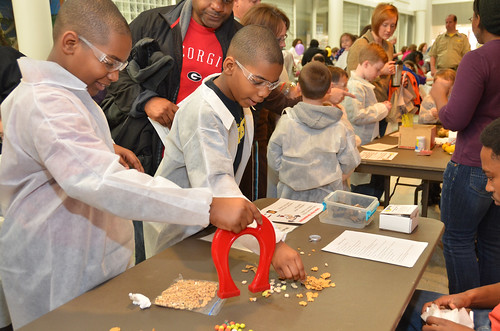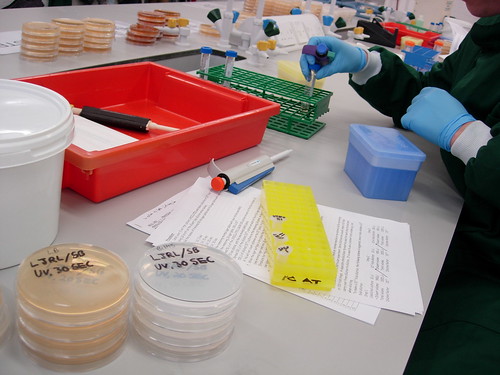Teaching Literacy as a whole? Check out our literacy resource page with articles, links, and more to get you started!
 Any complete language curriculum is bound to include reading. Plenty of research has shown us that reading and writing use different parts of the brain than speaking and listening, which means the skills don’t translate as well as intuition would lead us to believe and require quite a bit of focused attention.
Any complete language curriculum is bound to include reading. Plenty of research has shown us that reading and writing use different parts of the brain than speaking and listening, which means the skills don’t translate as well as intuition would lead us to believe and require quite a bit of focused attention.
At the heart of all good language teaching is communication. The goal with reading, therefore, is not to understand the dictionary definition of every word in a block of text, but to be able to understand the ideas that an author is trying to communicate to the reader. For many teachers (and students) this can be incredibly counter-intuitive.
The goal is to navigate concepts, not function as a human dictionary. When reading your own native language, or any language you read fluently, you don’t stop to ponder the definition and grammatical function of every word in a bit of text, but rather your brain quickly sweeps through the writing, pulls out the ideas, and you go on with your happy day.
Because we can explain the dictionary definition of (almost) every word we read, we often assume that this is a prerequisite to navigate the concepts in texts. In fact, this isn’t true at all thanks to the magic of context clues. Take this, for example:
He loved his dog very much and would take it with him everywhere he went. In fact, he would even take his ______________ with him to school where it would wait outside.
In the above example, if I asked an average intermediate class what word goes in the blank, they would easily respond with “dog.” Your goal as a teacher, then, is to be able to present them with this passage:
He loved his dog very much and would take it with him everywhere he went. In fact, he would even take his canine with him to school where it would wait outside.
…and easily get an answer to the question: “What does canine mean?” without having them check their dictionaries. They use the same skills but the second one is often more difficult for students, especially students without a strong academic background in their native language.
 The first is familiar, comfortable even. They aren’t supposed to know what’s in the blank, and using deductive reasoning to figure it out is what they’re meant to do. The second, however, presents them with an apparent lacking on their part. They’re missing something they were supposed to have and need to fix it… with a dictionary.
The first is familiar, comfortable even. They aren’t supposed to know what’s in the blank, and using deductive reasoning to figure it out is what they’re meant to do. The second, however, presents them with an apparent lacking on their part. They’re missing something they were supposed to have and need to fix it… with a dictionary.
The excellent reading teacher, therefore, not only teaches students how to deduce those meanings from texts, but empowers them with the belief that they can, and they should. When students become comfortable with unknown words, or even sentences and paragraphs, whole new texts open up to them that they wouldn’t have bothered to pull meaning from before.
They may not understand every bit of that New York Times article, but they’ll walk away understanding the basic, most important facts. Which, in two days time, is about what you or I would still remember anyway. Never forget, partial understanding is still understanding.
So, how do you train students to navigate texts fluently while simultaneously building foundational literacy skills? Easy, with pre-reading and multiple sweeps.
If you’re reading this, you likely read English relatively fluently, so I’m going to use a bit of text from an obscure language as an example: An article from the Esperanto Wikipedia.
Phase 1: Pre-Reading
The first goal with pre-reading is to set the context. Once they have a basic idea of the context, they have a much better idea of what sorts of facts they are looking for: what to expect and where to expect it. You want to make sure to use techniques like elicitation to keep your students active and at the center of the process instead of simply feeding the information to them.
Questions like these should work wonders:
1. What is the title of this article? What is it about?
2. Since it’s about a person, what kinds of facts do you think we should expect to see? (Here, ask follow-up questions to get things like where they were born, when they were born/died, important places they lived, important things they did, information about their family, etc. Keep in mind you’re not getting these facts about the person yet, just letting your students know these are the facts they should be looking for).
Phase 2: Sweeps

Now it’s time to attack the article itself. The goal here is to give your students a series of manageable tasks to accomplish for each read through, not to understand the entire article at once. Once they get proficient at pulling out important information piece by piece, you can slowly begin to combine the reading tasks into a smaller number of read-throughs.
Here is an example using the same article as before:
Sweep 1 – Dates: Have students read through the article, circling every date.
Sweep 2 – Identify all the proper nouns: Have students read through the article, underlining every proper noun.
Sweep 3 – Identify places vs. people: Have students read through the article a third time, turning the underlines on places into boxes.
Now, your students have have a good deal of the important information in the article identified. More importantly, they feel confident completing simple tasks with the text at hand. The next sweeps lead them to answer actual questions about Stowe’s life.
Sweep 4 – Birth & Death: Read the article and find out when HBS was born and when she died.
Sweep 5 – Bio: Now answer the following questions: Where was she born? Where did she grow up? In what year did she move to Cincinatti? What year did she get married? What was her husbands name?
Sweep 6 – Works: How many books did HBS write? What was her most famous book?
Phase 3: Using the Knowledge
Now that you’ve done all of those sweeps and had students write their answers in complete sentences, do you know what you’ve got? A classroom full of students primed and ready to write whole-paragraph summaries of the article. It’s actually a fairly simple step at this point and how much you do before setting them off on their own depends on the level of your class.
For a very low level class you would work as a group to generate five or more sentences about Harriet Beecher Stowe, then ask them to take those sentences and use them to write a full paragraph. The goal is to model a very basic paragraph of simple sentences “Harriet Beecher Stowe was an author. She was born in 1811. She died on 1896…” and so on.
For a more advanced class, you might generate one or two sentences and have them do the rest, or if they’ve been doing very well, simply ask them to write using the notes they’ve already created.
Keep in mind this sort of reading activity works best with texts just beyond their independent reading ability, it’s the perfect way to “take the next step” and get them comfortable with pieces of writing that are just outside of their comfort zone. For determining reading ability and choosing texts, check out these great articles: How to Test Reading Skills in Any Language, and How to Determine Text Difficulty in Any Language.
Creative Commons Love: zev, B Zedan, Moyan Brenn, and Jos on Flickr.com






 This September, Open Equal Free provided a study skills training program to
This September, Open Equal Free provided a study skills training program to 

 Show An Example
Show An Example









 We’re not going to get into the middle of that messy, messy debate. The goal of this series is to let you know the components of literacy, and therefore of holistic literacy assessment. Be warned that, although these skills do tend to develop in tandem, it is absolutely possible to create young “readers” who can decode and fluently read a block of text quite beautifully while not comprehending much, if anything at all.
We’re not going to get into the middle of that messy, messy debate. The goal of this series is to let you know the components of literacy, and therefore of holistic literacy assessment. Be warned that, although these skills do tend to develop in tandem, it is absolutely possible to create young “readers” who can decode and fluently read a block of text quite beautifully while not comprehending much, if anything at all.
